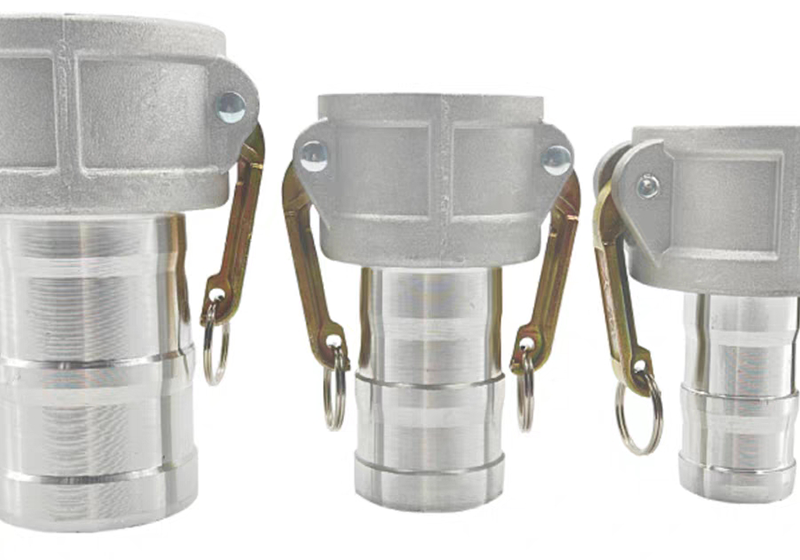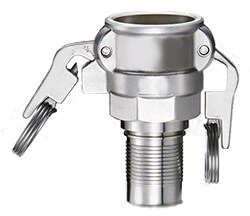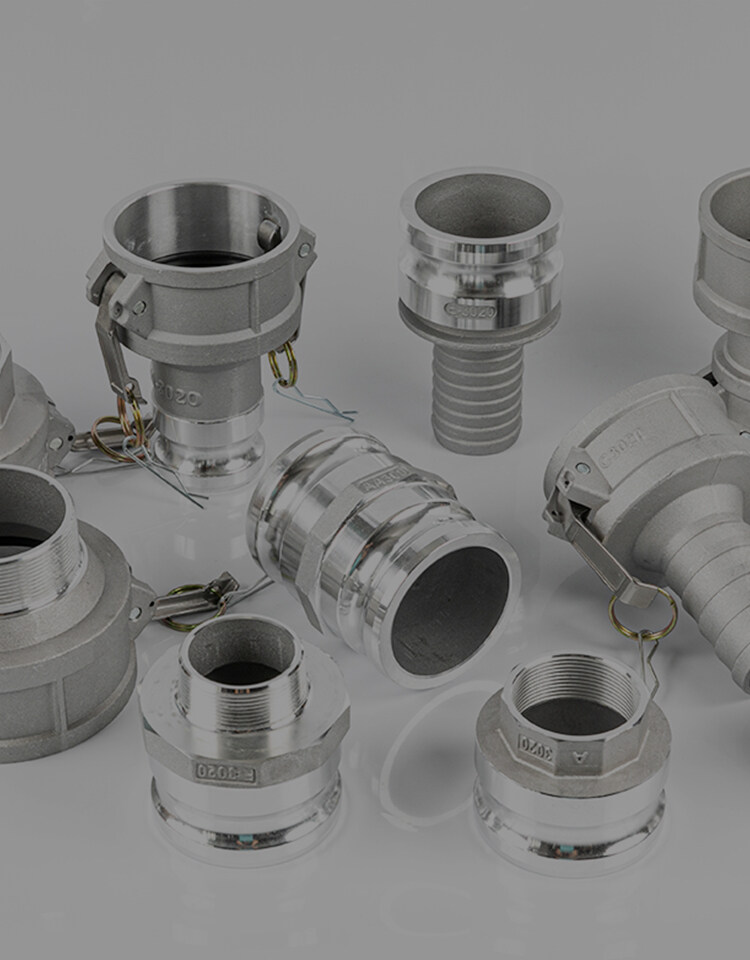Ошибка формата электронной почты
emailCannotEmpty
emailDoesExist
pwdLetterLimtTip
inconsistentPwd
pwdLetterLimtTip
inconsistentPwd

Новости
Здесь вы можете описать кусок текста, который хотите выразить

Maximizing Efficiency with Aluminum Hydraulic Coupler Solutions
In the world of fluid dynamics and hydraulic systems, the quest for efficiency and reliability is never-ending. Central to this pursuit is the humble yet critical component known as the aluminum hydraulic coupler. This versatile connector not only streamlines the process of joining hydraulic lines but also embodies the innovation that industry professionals seek. In this comprehensive guide, we delve into the nuances of aluminum hydraulic couplers, exploring their benefits, applications, and the various complementary components such as aluminum pipe fittings, aluminum quick couplers, and AN hose fittings and adapters. Join us as we unravel the intricacies of these essential devices and how they contribute to the seamless operation of hydraulic systems.
Understanding Aluminum Hydraulic Couplers
Aluminum hydraulic couplers serve as the connective tissue in hydraulic systems, allowing for the quick and efficient transfer of hydraulic fluid. These couplers are designed to withstand high pressures while providing a leak-free seal. The use of aluminum in these components offers several advantages, including a lighter weight compared to steel or brass, which can be crucial in mobile hydraulic applications where every ounce matters. Additionally, aluminum’s natural resistance to corrosion extends the life of the coupler, especially in environments where moisture or corrosive fluids are present.
The Role of Aluminum Pipe Fittings in Hydraulic Systems
Aluminum pipe fittings are integral to the integrity of a hydraulic system. They must match the specifications of the pipes they connect, ensuring a secure fit and proper function. When selecting aluminum pipe fittings, it’s important to consider the working pressure of the system, the type of fluid being transported, and the temperature range of the operating environment. Proper installation is key to preventing leaks and maintaining system integrity. This includes cleaning all threads and sealing surfaces before assembly and applying appropriate thread sealants or tape if required.
The Convenience of Aluminum Quick Couplers
Aluminum quick couplers are designed for speed and simplicity. They allow for rapid connection and disconnection without the need for tools, which is invaluable in situations where time is critical, such as in emergency repairs or when equipment needs to be moved frequently. Safety is also a paramount concern with quick couplers; they must be able to connect securely under pressure without risk of accidental disconnection. Regular inspection and maintenance are necessary to ensure that the locking mechanisms and seals remain in good working order.
Navigating AN Hose Fitting Sizes and Specifications
AN (Army-Navy) hose fitting sizes are a standardized measurement used to ensure compatibility between hoses and fittings in high-performance applications, including motorsports and aerospace. These sizes are denoted by a dash number, which corresponds to the size of the fitting in sixteenths of an inch. For example, a -4 AN fitting would have a diameter of 4/16 or 1/4 inch. When selecting AN hose fittings and adapters, it’s crucial to match the size and thread type to the hose to ensure a proper seal and prevent leaks.
The Versatility of Cam and Groove Connectors
Cam and groove connectors, also known as camlock fittings, are widely used in industrial applications where hoses and pipes need to be connected and disconnected quickly. These fittings use a camming action to lock the male and female ends together, creating a secure seal. The simplicity of their design allows for easy operation, even when wearing gloves or in poor visibility conditions. When paired with aluminum hydraulic couplers, cam and groove connectors provide a reliable and efficient means of managing fluid transfer in a hydraulic system.
Installation and Maintenance of Aluminum Hydraulic Couplers
Detailed Installation Process:
Preparation:
Begin by selecting the correct aluminum hydraulic coupler for your application, considering factors such as size, pressure rating, and fluid compatibility.
Gather all necessary tools, including wrenches and cleaning supplies.
Cleaning:
Thoroughly clean all connecting surfaces on both the coupler and the mating hose or pipe. Use a non-abrasive cloth and a suitable cleaning solvent to remove oil, dirt, and debris.
Inspect the threads and sealing surfaces for any signs of damage or wear.
Alignment and Connection:
Carefully align the threads of the aluminum hydraulic coupler with the corresponding threads on the hose or pipe. Misalignment can lead to cross-threading, which can damage the threads and compromise the connection.
Hand-tighten the coupler until it is snug against the hose or pipe, ensuring that it is not cross-threaded.
Securing the Connection:
Once hand-tightened, use an appropriate wrench to finish tightening the coupler. Follow the manufacturer’s specifications for the correct torque to avoid over-tightening, which can strip the threads or damage the coupler.
If the coupler requires a gasket, ensure it is properly seated and in good condition before finalizing the connection.
Final Inspection:
After installation, inspect the connection for proper alignment and tightness.
Perform a pressure test, if possible, to ensure there are no leaks at the connection point.
Routine Maintenance:
Regular Inspections:
Schedule routine inspections of the aluminum hydraulic couplers in your system. Look for signs of wear, such as scratches or deformation, and check for corrosion, particularly if the couplers are used in harsh environments.
Gasket and Seal Maintenance:
Examine gaskets and seals for any signs of deterioration, such as cracks or brittleness. Replace any compromised gaskets or seals immediately to maintain a leak-free system.
Lubrication:
Apply a suitable lubricant to any moving parts, such as the cam arms on cam and groove connectors. This will ensure they operate smoothly and reduce the risk of seizing or wear.
Cleaning:
Keep the couplers clean from accumulated dirt, grime, and fluids. Regular cleaning will prevent buildup that could lead to corrosion or impaired function.
Part Replacement:
If any part of the aluminum hydraulic coupler is found to be worn or damaged, replace it immediately. Using damaged components can lead to system failure and safety hazards.
Case Studies: Aluminum Hydraulic Couplers in Action
Agriculture:
In the agricultural industry, aluminum hydraulic couplers are used extensively on farm machinery such as tractors, combines, and irrigation systems. The ability to quickly change hydraulic attachments, like plows or harvesters, is crucial for efficiency during planting and harvesting seasons.
For example, a farmer can switch from a tiller to a seeder in minutes without the need for complex tools, thanks to the simplicity of aluminum hydraulic couplers. This quick-change capability maximizes the use of equipment and minimizes downtime.
Manufacturing:
In manufacturing environments, particularly those that utilize automated assembly lines, aluminum hydraulic couplers are part of the critical infrastructure that keeps production moving. They are used to connect machinery to hydraulic power sources and can be found in applications ranging from automotive assembly to packaging equipment.
The reliability and ease of use of aluminum hydraulic couplers ensure that when equipment needs to be reconfigured or maintained, the transition is swift, reducing the potential for costly production delays.
Aerospace:
The aerospace sector benefits significantly from the weight savings provided by aluminum hydraulic couplers. In an industry where every pound affects fuel efficiency and performance, the lightweight nature of aluminum is a major advantage.
Hydraulic systems in aircraft are used for various functions, including landing gear operation, flight control surfaces, and braking systems. The use of aluminum hydraulic couplers contributes to overall weight reduction, which can lead to improved aircraft performance and reduced operational costs.
Future Trends in Aluminum Hydraulic Coupler Technology
The landscape of aluminum hydraulic coupler technology is poised for significant evolution in the coming years. Here are some anticipated trends:
Material Advancements:
Research in materials science is expected to yield new aluminum alloys that are lighter and exhibit higher tensile strength. These developments will enhance the performance of hydraulic couplers in demanding applications.
Surface treatments and coatings may be developed to further improve corrosion resistance and reduce wear, extending the life of the couplers.
Design Innovations:
Engineers are likely to focus on ergonomic designs that facilitate easier handling and operation, especially for quick-release models. This could involve rethinking the shape and actuation mechanisms to reduce the effort required to connect and disconnect.
Smart couplers equipped with sensors could emerge, providing real-time data on flow rates, temperature, and coupling status, enabling predictive maintenance and system optimization.
Sustainability Focus:
As environmental regulations become stricter, the industry will shift towards more eco-friendly manufacturing processes that reduce emissions and waste.
Recycling programs for aluminum hydraulic couplers will become more prevalent, with manufacturers offering incentives for returning end-of-life products for material recovery.
Customization and 3D Printing:
Customization will play a larger role as clients seek couplers tailored to specific applications. 3D printing may become a standard method for producing bespoke couplers quickly and cost-effectively.
The integration of 3D printing could also allow for the creation of complex internal geometries that improve fluid dynamics and reduce pressure drops.
Choosing the Right Supplier for Aluminum Hydraulic Couplers
When selecting a supplier for aluminum hydraulic couplers, several factors should be considered to ensure that you receive high-quality products and services:
Quality Assurance:
Look for suppliers that adhere to recognized quality standards, such as ISO certifications. This indicates that they have robust quality management systems in place.
Suppliers should conduct rigorous testing on their products to ensure they can withstand the pressures and environments they will encounter.
Product Range and Customization:
A supplier with a broad product range can provide solutions for various applications, reducing the need to source from multiple vendors.
The ability to offer custom solutions is important for unique applications where standard couplers may not suffice. A good supplier should be able to collaborate with you to design and produce custom couplers.
Technical Support and Customer Service:
Strong technical support is essential. The supplier should have knowledgeable staff who can provide assistance with product selection, installation guidance, and troubleshooting.
Responsive customer service ensures that any issues are addressed promptly, minimizing downtime and frustration.
After-Sales Support:
After-sales support, including comprehensive warranty services and product support, is a testament to the supplier’s commitment to their products’ longevity and customer satisfaction.
Availability of spare parts and the ability to perform repairs can also be a critical aspect of after-sales support.
Reputation and Reliability:
Research the supplier’s reputation within the industry. Testimonials, case studies, and reviews can provide insight into the experiences of other customers.
A supplier with a proven track record of reliability and on-time delivery is more likely to be a dependable partner for your hydraulic coupler needs.
Conclusion: The Integral Role of Aluminum Hydraulic Couplers
Aluminum hydraulic couplers are indispensable in modern fluid management systems. They offer a combination of strength, flexibility, and corrosion resistance that is unmatched by other materials. As we’ve explored in this guide, these couplers are essential for a wide range of industries and applications. With ongoing advancements in technology and design, aluminum hydraulic couplers will continue to play a vital role in the efficiency and effectiveness of hydraulic systems around the world.

